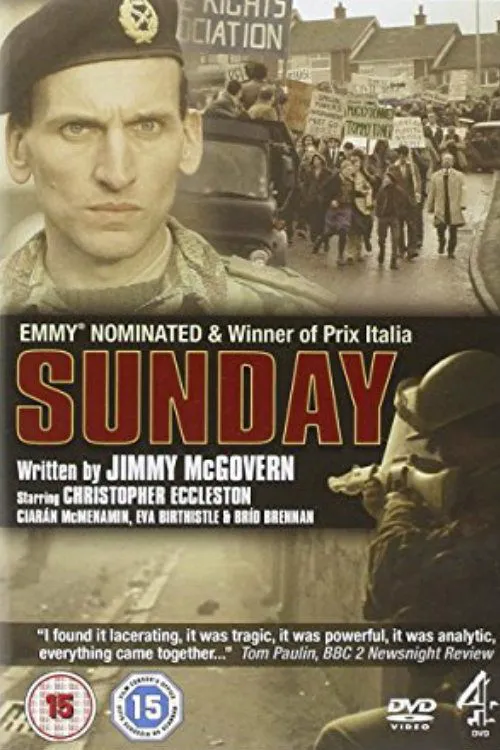Sunday

Trama
In the early 1970s, Northern Ireland was gripped by a civil war, largely fueled by the Catholic minority's long-standing demand for equal rights in a predominantly Protestant state. The British government, wary of losing control over a region that could become a major hub for Irish nationalism, deployed troops to quell the uprising. The Derry community, tired of being marginalized and oppressed, saw an opportunity to protest the introduction of internment, a draconian policy that allowed authorities to arrest and detain individuals without charge or trial. Amidst this backdrop, the Northern Ireland Civil Rights Association (NICRA) planned a massive peaceful march on January 30th, 1972. The rally, aimed at highlighting the injustices inflicted upon Catholics and calling for equal treatment, would be the largest of its kind in Derry's history. Thousands of protesters took to the streets, marching in support of their cause and demanding an end to internment. Among them were individuals from all walks of life: students, trade unionists, politicians, and ordinary people who had lost loved ones to the violence. They gathered at an open field near Free Derry, a notorious area of town controlled by the Derry Housing Action Committee, a local organization that stood for equality and self-determination. The atmosphere was tense, yet optimistic. Many had lost faith in the possibility of change, but this march offered a glimmer of hope. The Derry community was prepared to stand up and demand justice. They were met with an enormous police presence, including British soldiers, some of whom wore masks to conceal their identities. On that fateful Sunday, events unfolded in a sequence of chaos and violence. According to official reports, soldiers opened fire on protesters after receiving a tip-off that shots had been fired from the crowd – a claim that would later be discredited. However, it is disputed that any shots were fired by the protesters themselves. Eyewitness accounts reveal a vastly different narrative: that British soldiers and police stormed the marchers, beating and shooting innocent civilians. The once-peaceful crowd suddenly found itself in a maelstrom of violence, as soldiers in armored vehicles and police in riot gear descended upon the unarmed protesters. Panic set in as the Derry community desperately attempted to protect themselves from the hail of bullets and batons. That morning, 13 people lost their lives, and 15 more were seriously injured. The scene at the time was one of utter devastation: bodies lay strewn across the ground, some lifeless, others crying out for help as they clung to loved ones. The streets echoed with the cries of those desperately trying to rescue the fallen. Panic and confusion spread as chaos gripped Derry. As news of Bloody Sunday began to spread, an investigation ensued, led by Lord Widgery, a senior British judge. The inquiry, conducted hastily behind closed doors, concluded that soldiers had only opened fire in response to attacks from the marchers. However, this narrative was challenged by numerous eyewitnesses and photographs, which later emerged to refute the official account of events. Those who had witnessed the carnage recounted stories of how soldiers and police attacked unarmed civilians without provocation. Photographic evidence captured scenes of people being beaten and battered by the authorities. It wasn't until 1998, nearly three decades after Bloody Sunday, that the Derry community saw some semblance of justice. The Bloody Sunday Inquiry, led by Lord Saville, was established to re-examine the events surrounding the march and to determine whether the victims were indeed innocent. The inquiry's findings were a damning indictment of the British Army's actions that day. In a scathing report, Lord Saville concluded that, in fact, some soldiers had opened fire on unarmed civilians. Furthermore, he stated that soldiers had been given "no reason" to believe that they were under attack at the time. The inquiry laid bare the extent of the British Army's cover-up of Bloody Sunday, with many soldiers having lied about the events under oath. As a community, the people of Derry finally felt vindicated, but the scars of that fateful day would linger on for generations to come. Sunday's tragic events had been deliberately obfuscated, and the true story, one of bloodshed and betrayal, would eventually be set free.
Reseñas
Recomendaciones


